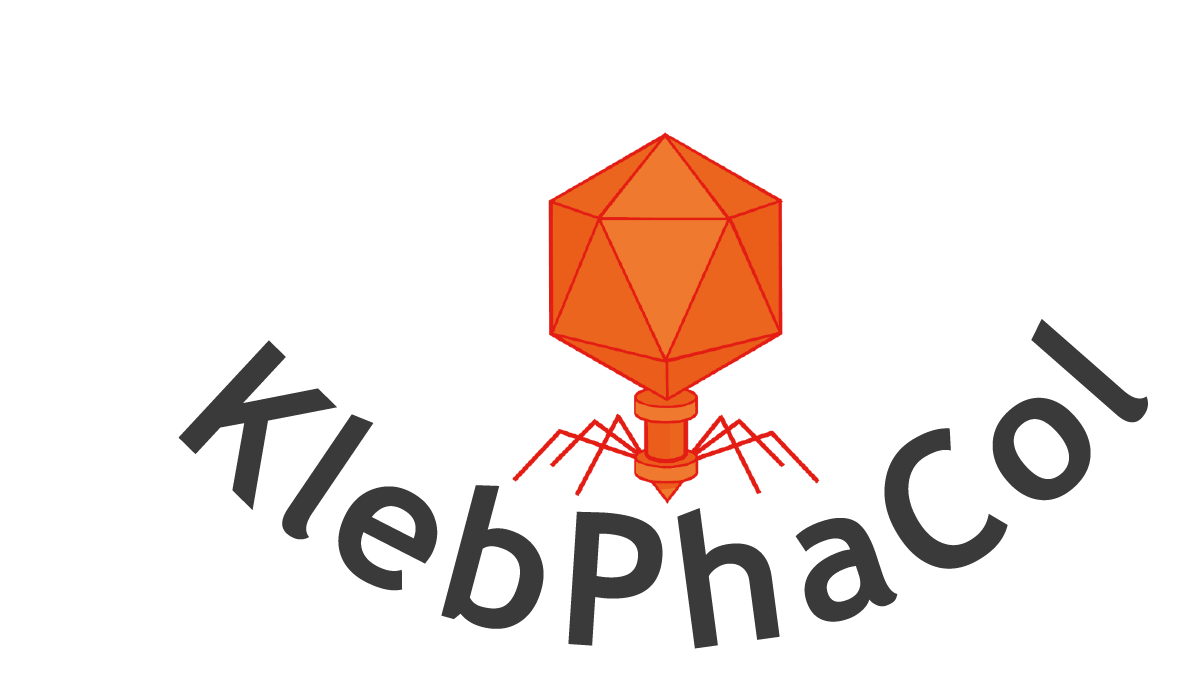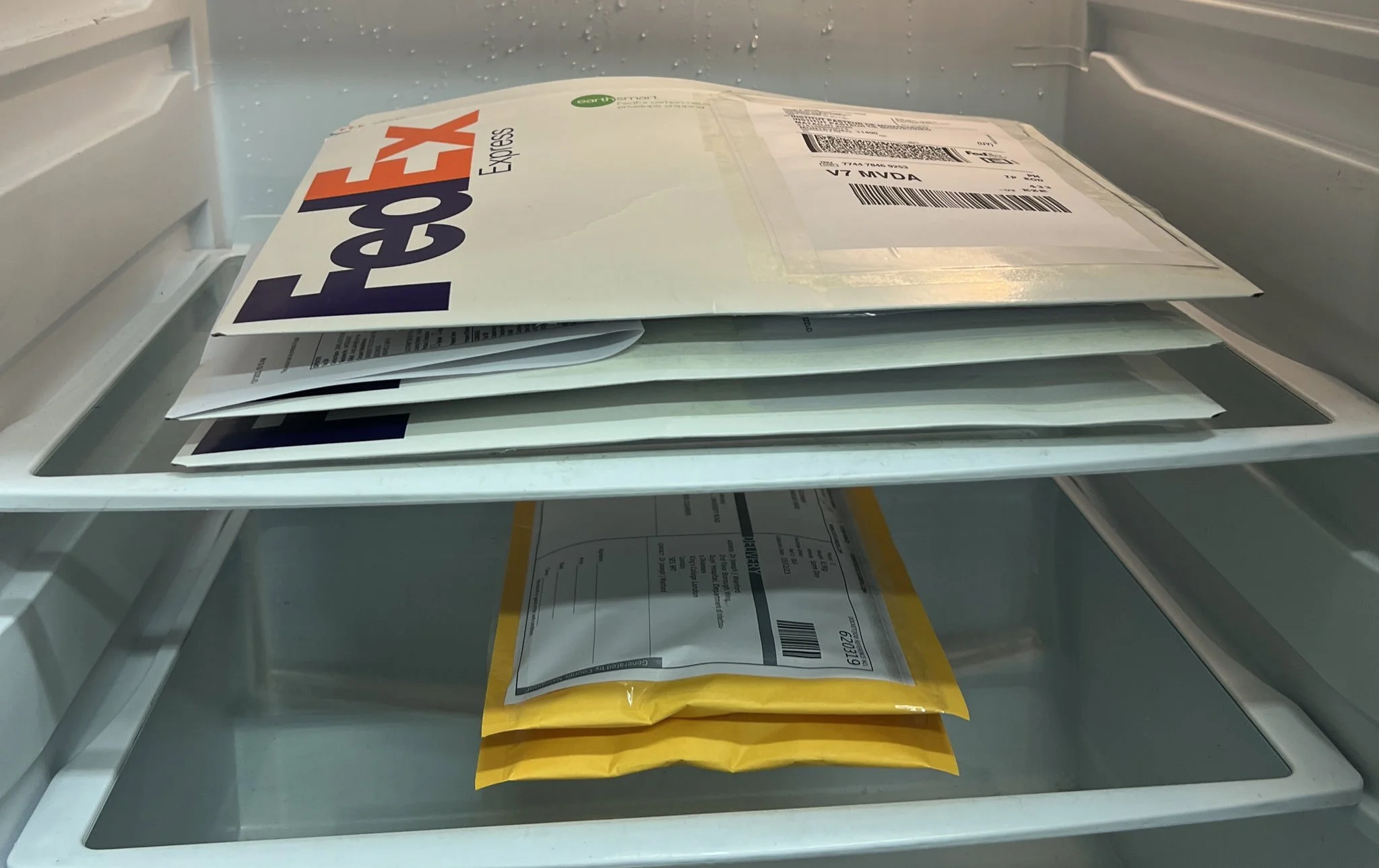The Collection
KlebPhaCol consists of 52 barrier-free, open-source Klebsiella spp. targeting phages and 74 Klebsiella spp. clinical strains.
See here how you could use the collection in your research.
To keep the collection up-to-date, we are committed to reviewing additions on a regular basis.
Last updated: October 30th 2025
Find out what you can request.
-
All 52 phages in the collection are available for distribution. To request individual phages, specify their names or characteristics in the request form.
-
All 52 phages can be propagated with only 7 strains, 6 of which are available for open distribution:
L0240
80528
164125A
164413U/2
KLEB5
M6
The 7th propagation strain, NCTC 7427, should be purchased directly via the NCTC strain bank.
-
Of the 74 strains used to characterise KlebPhaCol, currently only 38 are available for open distribution. We are working on obtaining permissions for additional strains, however the following strains must be requested from ATCC/NCTC banks: NCTC 13368, NCTC 7427, NCTC 13438, NCTC 13443, ATCC 11296, ATCC 13182.
The 38 shareable strains:
KLEB11
164413U/2
163575R
L0240
KLEB12
921530F
1_1_55
KLEB5
4_1_44FAA
K5962
KLEB9
L0549
L0506
KLEB6
K6500
K5864
164121Y
164358U
L0593
KLEB7
80528
KLEB2
KLEB10
L0644
163895Q
L0747
922221W
L1522
L0738
M6
164125A
K6310
KLEB3
KLEB4
163862E
L1392
KLEB14
KLEB13
If selecting this option, please specify which strains you’d like to obtain in the request form.
Not sure what to request? Scroll down to explore the phages and strains in our collection.
Already know what you need? Submit your request below!

Search through the collection
To make your KlebPhaCol experience better, we’ve created a searchable domain were you can search for the characteristics you are interested in, for either the phages or the strains.
The Roth phages
The Roth phages were isolated between 2021-2023 using wastewater (from Utrecht Medical Centre in the Netherlands and from Portswood, Southampton in the UK) as the phage source, enriched with 32 Klebsiella spp. clinical isolates.
TEM images for all phages!
They span the three classic morphotypes
The Roth phages:
Roth01
Roth04
Roth08
Roth09
Roth10
Roth16
Roth17
Roth19
Roth20
Roth21
Roth22
Roth23
Roth24
Roth26
Roth27
Roth30
Roth32
Roth34
Roth37
Roth39
Roth41
Roth42
Roth44
Roth47
Roth49
Roth50
Roth51
Roth61
Roth66
Roth67
Roth68
Roth71
Roth72
Roth74
Roth75
Roth76
ST323-targeting phages (read more below):
RothD
RothG
RothI
RothJ
Roth77
Roth78
Roth79
Roth80
Roth83
Roth84
Roth85
Roth87
Roth88
Roth90
Roth93
Roth96
Genomic analyses
These 52 phages belong to the Caudoviricetes class and expand across five different phage families:
NEW!
and across seven different phage genera:
Drulisvirus
Webervirus
Sugarlandvirus
Slopekvirus
Jiaodavirus
Nakavirus
Gajwadongvirus
NEW!
Host range
The phages target 36/74 (49%) strains of the collection.
See the phage taxonomic clustering network here.

Search through the KlebPhaCol phages
Klebsiella spp. clinical strains
The 74 Klebsiella clinical strains come from different geographical locations and different tissue infections.
The strain collection currently covers 41 known* sequence types (ST) 32 known* capsular locus types (KL), and 11 known* O-antigens.
*some strains were unable to be classified by the genomic typing tools used.
Strains covered by the collection:
K. pneumoniae
K. variicola
65 strains
2 strains
K. quasipneumoniae
K. oxytoca
3 strains
2 strains
K. pneumoniae subspecies ozaenae
1 strain
Sequence types (ST) covered by the collection:
ST11
ST14
ST15
ST17
ST23
ST26
ST35
ST37
ST38
ST45
ST86
ST91
ST101
ST133
ST319
ST240
ST635
ST63
ST848
ST873
ST896
ST1221
ST1254
ST1411
ST1875
ST1958
ST2459
ST2559
ST5392
ST48
ST485
ST1774
Capsular locus types (KL) covered by the collection:
KL1
KL2
KL3
KL4
KL17
KL20
KL21
KL22
KL24
KL27
KL28
KL38
KL46
KL52
KL53
KL61
KL68
KL81
KL105
KL106
KL116
KL124
KL127
KL125
O-antigen types covered by the collection:
O1ab
O2afg
O2a
O2ac
O12
O13
Unknown
1 isolate
K. aerogenes
1 strain
2 isolates have an unknown ST type
Unknown
O3/O3a
O3b
OL13
O5
ST528
ST458
ST489
ST661
KL12
KL5
KL10
KL13
KL112
KL107
KL110
KL113
ST353
ST258
ST268
ST323
Strain characterization
Strains have been genomically and phenotypically characterised.
Phylogeny was created by building a custom model on Poppunk. Stress and virulence genes are predicted from NCBI AMR database, virulence and AMR were additionally predicted with Abricate. Defense systems were predicted using both Padloc and DefenseFinder. Lastly prophage identification was done with Phigaro.
Antibiotic susceptibility was also experimentally verified for 13 commonly used antibiotics. Kleborate was used to assign virulence and resistance scores.
Find our K. pneumoniae strains in a Pathogenwatch public collection
With Pathogenwatch, you can compare your K. pneumoniae strains to those of the collection, and see additional metadata from the strains.
Applications beyond Phage Therapy
Klebsiella pneumoniae is a pathogen most commonly associated with nosocomial (hospital-acquired) infections leading to pneumonia, urinary tract, and soft tissue infections, as well as to more severe conditions such as septicemia, liver abscess, and sepsis, particularly for the hypervirulent strains. However, K. pneumoniae is also a gut colonizer and pathobiont. In fact, it has been associated with several gut-related diseases. Federici et al demonstrated that K. pneumoniae was significantly enriched in patients with inflammatory bowel disease (IBD), including both Crohn’s disease and ulcerative colitis patients (Federici et al, 2022). A similar observation was seen in patients with primary sclerosing cholangitis (Ichikawa et al 2023). Gut colonization of K. pneumoniae can also lead to subsequent serious infections such as liver abcess and septicemia, particularly in immunocompromised individuals.
The IBD study identified a specific clade of K. pneumoniae associated with the condition: ST323
In both studies, phages were considered as a therapeutic option in rodent models, with promising results. Phage modulation of the gut microbiome was tolerated and successful, providing evidence that phages can be a therapeutic alternative beyond classical bacterial infections.
KlebPhaCol contains two ST323 strains targeted by 4 of the phages in the collection (RothD, RothG, RothI, RothJ).
This only showcases the potential of utilizing this collection outside of what is classically known as Phage Therapy.
Search through the KlebPhaCol strains

Use the collection for your research!
You can request the collection as a whole or partially, depending on your research focus and needs!





